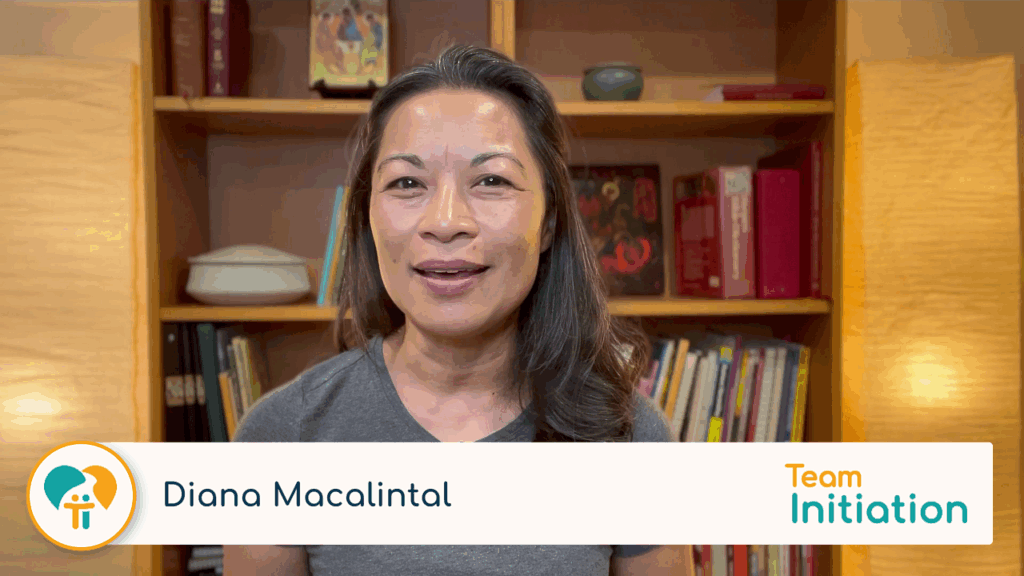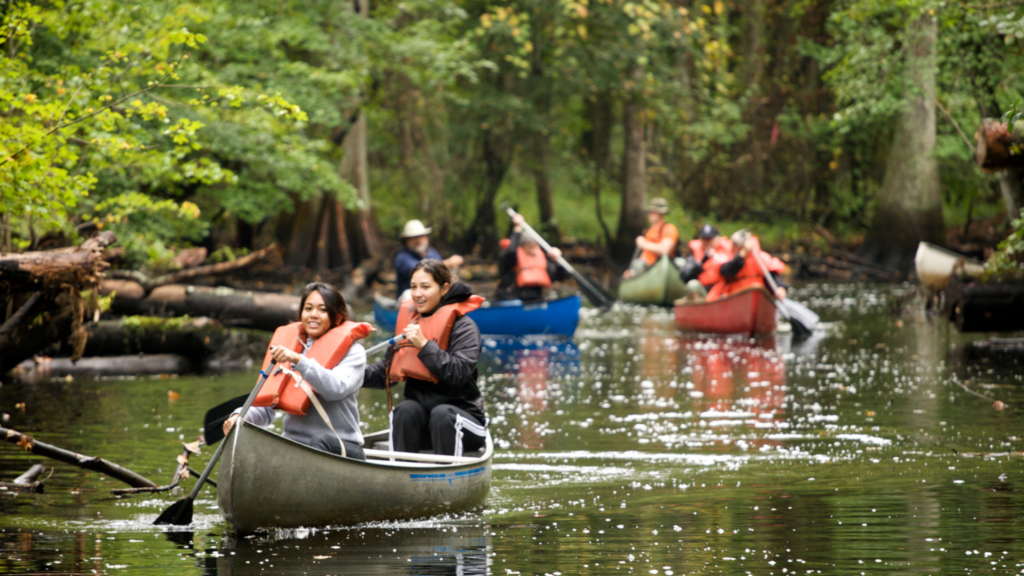
We all know the saying about not being able to fit square pegs into round holes. When we accompany others on the journey of faith, we are almost always in the business of getting squares to fit into rounds. In some sense, that is what we mean be conversion. People are living “square” lives and need to be living in “round” lives.
But conversion goes both ways, and the Holy Spirit has a funny way of challenging our preconceptions. It is easy to assume that our faith formation process or our catechumenate process (our round holes) are the best possible way to accompany seekers (the square pegs). We see it as our ministry and our pastoral duty to gently shave off their edges and fit them into our really, really great structure.
But when we read the gospels, that’s not what Jesus did. Jesus had a seemingly unlimited number of differently shaped holes that those who encountered him could fit into. Think about how he called and formed Peter, James, Mary and Martha, the Samaritan woman, the centurion, the good thief on the cross, Paul — just to name a few. The path to discipleship for each of these saints was unique.
If we are going to teach as Jesus taught, we have to think as much about changing the shape of our holes as much as changing the shape of our seekers.
Here’s a recent example we encountered.
Challenging our catechesis assumptions
Two teen girls approached their parish to schedule their quinceaneras. Both girls are baptized, but they have not yet celebrated confirmation or first communion. According to the parish, the girls are “moderately catechized.”
Traditionally, the quinceanera celebration begins with a Mass of thanksgiving. However, when the young woman who is celebrating cannot share in communion during the Mass, the parish will often celebrate a Liturgy of the Word without eucharist. In both of these cases, however, the families were intent on having a full Mass at which the girls would share in communion.
The girls approached the parish in December and want to schedule their quinceaneras for May.
For many of us, our round-hole process would make us think these girls cannot possibly be prepared in time to celebrate both confirmation and first communion in time for May quinceaneras.
And if we were going to try to fit them into our round holes, which hole would we plug them into? First communion classes (which are often designed for seven-year-olds)? The confirmation group (which is often a two year process)? The RCIA group (which started meeting in September)?
Our round-hole thinking might tell us that the most pastoral thing to do is to hold firm on celebrating a Liturgy of the Word without eucharist.
If, however, we pause and ask what Jesus would do, more options open up for us. Maybe we need to create some different shaped holes. But what shapes? So far, we may be assuming that both girls are the same shape. When they are identified as “moderately catechized,” we may have some assumptions about what that means. When we hear that the girls’ families are insisting on a full Mass and not just a Liturgy of the Word, we may have some assumptions about why that is.
Think about how Jesus called and formed Peter, James, Mary and Martha, the Samaritan woman, the centurion, the good thief on the cross, Paul — just to name a few. The path to discipleship for each of these saints was unique.
A pastoral catechetical response
We cannot know what shapes these girls and their families are until we ask them. The first girl might be considered moderately catechized because, while she seldom comes to church, she does know the Lord’s Prayer and how to pray the rosary. However, she does not pray these prayers as a regular practice.
The second girl is also seldom seen at Sunday Mass. That is because she works on weekends, and her paycheck is an important part of the family finances. She regularly prays the rosary with her abuela at home, and she is teaching her younger brother how to pray the Lord’s Prayer (in both English and Spanish).
The family of the first girl wants to make sure a Mass of thanksgiving is celebrated because that is what all the other families will be doing. It is important to them to be seen as solid members of their neighborhood community. The second family has similar feelings. In addition, however, the mother strongly feels the presence of Christ when she shares in communion. She wants her daughter to have that same kind of encounter on the occasion of her quinceanera.
The pastoral response to these girls and their families will be necessarily different. And neither response will likely fit into any of the processes the parish already has up and running. Both girls will need an individualized apprenticeship process, unique to each of them, organized along the guidelines in paragraph 75 of the Rite of Christian Initiation of Adults.
That would mean getting them involved in those areas of the life of the parish community where they are most likely to encounter Jesus. They will need sponsors from among the parishioners who will make sure the girls are at Mass every week and who will also introduce them to other activities in the parish.
I would also try to get them invited to dinner at the homes of a few different parishioners during their preparation period. And then I would be sure to do some regular mystagogical reflection with the girls and their families based on their encounters with Jesus in the Mass, in the parish activities, and in their meals with parishioners.
During the initial interview, I would ask the girls and their families what signs they think they need to see that would indicate the girls are ready to celebrate confirmation and first communion. And then their catechist and sponsors should be constantly looking for those signs and the signs in paragraph 120 of the Rite of Christian Initiation of Adults and gently challenging the girls to take steps to begin to exhibit those markers of faith development.
I know that’s all an ideal and may not all be doable by May when the girls want to celebrate their quinceaneras. But if even a small bit of the church’s vision for accompanying these girls on their journey of faith can be accomplished, they will have a much richer experience of their quinceaneras than if the parish pushes them through a condensed school model just so they can have a Mass during their celebration.
Your turn
What is your vision for accompaniment? How do you work with and invite seekers to walk with you in the catechetical process? Share your thoughts in the comments below.


















Covid was what pushed our team into some major challenges and changes. We were running a form of year round process which formally began two weeks after Easter, with inquiry being on Monday evenings and Rites of Welcome and Acceptance and mandatory Mass attendance and dismissal session starting late summer . Within that setting we also brought baptized candidates to sacraments when they were deemed ready, within that time frame. After Covid hit, we were “down” for 5 months before we switched completely to Sunday morning with new folks, primarily because we were still not allowed inside buildings, so had to meet outdoors in daylight, so that set a pattern of all Sunday morning, Mass followed by a catechetical session for inquiry and liturgical catechesis. That group missed so much because of vacations and illness, quarantine, etc., that they were not ready for sacraments until Pentecost.
Our team decided they much preferred a complete Sunday morning process from the beginning., so we began that way last June and required outdoor Sunday Mass attendance, followed by inquiry;, and having the Welcome/Acceptance rites in September, and then focusing on liturgical catechesis.
I believe it was partly the effect of Covid that we ended up with the ;most diverse, group sacramentally that we’ve ever had. We have a couple coming in from a Pentecostal background in which the husband has three years of Scripture study, reads the entire Bible cover to cover every year, and is extremely intelligent, and hopes to become a deacon in the Church. We have an 18 year old autistic young man whose parents attend with him, to support him, and whose sister eventually joined us because she needs Confirmation. This is their entire family. We have a single man of 40, never baptized. We have 3 more couples two married, and one scheduled for marriage here this coming summer. In each of these 3 couples, one partner needs only Confirmation, and one needs only Eucharist. I have always followed the guidelines that someone who needs only Confirmation should not be confirmed at the Easter Vigil, but all these people are partners to someone who needs Eucharist and Baptism. I have consulted with my pastor about all this, and he is sure that as a one time thing, our bishop will allow us to bring all these people through the Easter Vigil. I don’t environs that in the future. I still see the wisdom of keeping Adult Confirmation as a separate process. But the group is amazing, growing spiritually. The Pentecostal couple seem very happy with participating in the process itself, even though they are really ready for sacraments now, if they so wished. We are letting them make the choice. The autistic young man is enjoying the Mass, reading his Bible on his own at home, and the witness his parents and sister give in their support of him brings grace to all of us.
Running the process this way has helped us provide a longer time of Mass attendance together, giving the candidates the opportunity to really become familiar with it.
Best of all, we have been able to welcome in right away anyone who calls and invite them to both Mass and the session that follows. We have already had one young man join us a month ago. He will not go to Vigil this year, but will transition in to the new group in May. Meanwhile he’s getting familiar with the mass, the Scriptures and the community, and feels comfortable and welcomed.
I also expect that when our Pentecostal couple are in full communion with us, they will continue to be involved with the RCIA process.
The challenge with offering more personal intervention and guidance is quite simply one of resource availability and competence. As RCIA process leader I earned Certificates in Lay Formation Ministry and Church History from joint effort of Notre Dame School of Theology (on line) and the Archdioese of Indianapolis. I also participated in some in depth Vatican II seminars. At same time all the other RCIA Team Catechists have reached ages of retirement or older and decided to leave the ministry. We have about 15 Adult Catechumens and Candidates and about 20 “kids” Catechumens every year. Each has their own story and we do the best with what we have. I even created some 40 YouTube videos to help with the Catechists work and added Google Classroom last year. Meanwhile we cannot recruit new team members….they just don’t want to commit. Finally we are transitioning to major Hispanic community. Very challenging
Hi Bruce. I agree that this ministry can be challenging at times. And I know that you and most people that the Holy Spirit has called to this ministry are up to the challenge. I believe you have all the gifts you need to do exactly that the Spirit is asking you to do.
As I’m sure you know, a parish with someone who has the background and training that you have is more the exception than the rule. And yet, all parishes, no matter how richly or poorly they are resourced, are tasked with the same mission — to announce the Good News of Jesus Christ.
I have no doubt that you and your parish will find creative ways to accomplish the mission. There are so many people in the world who are desperate to have the kind of peace and joy that we have. There just has to be a way that we can get that message out to them.
I will be praying for you. Blessings on your ministry. And thank you for your dedication and commitment.